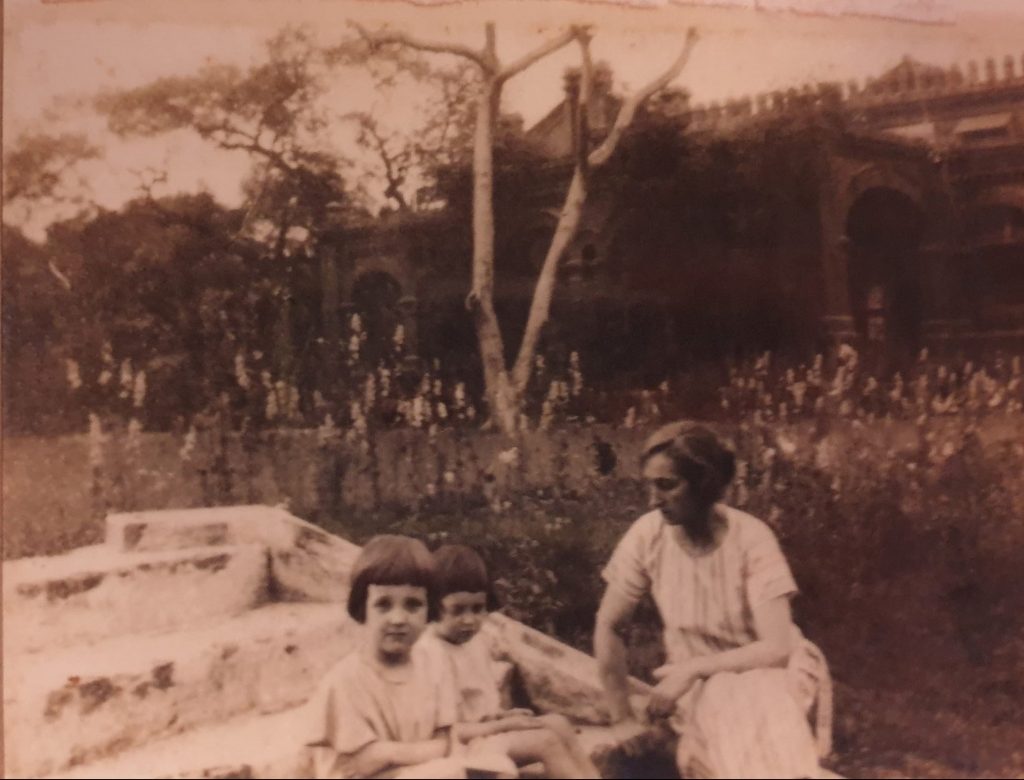
This collection is based on the work of Catriona (1920-2006) and Mairead (1921-1990) Macdonald, two sisters whose artistic practices were informed by international travel and Scottish roots. Their parents were from the Isle of Skye: Margaret Macdonald, née Mackinnon, from Staffin and Dugald Macdonald from Portree. Their father was a banker and because of his work, the sisters were born in Karachi which was then part of British-ruled India where they lived until 1929. The photograph above shows Catriona and Mairead with their mother in the garden of their home in Kanpur in 1926 [SL.D188.1.3.7.8]. During their time in Karachi they found an interest in art which would come to be a lifelong occupation for the sisters.
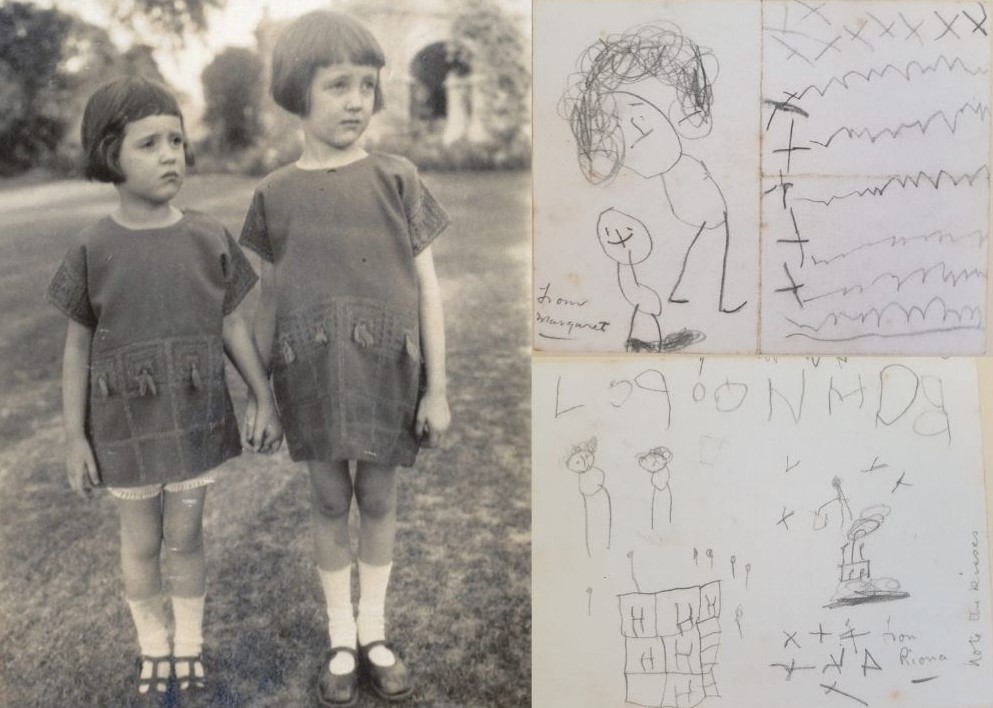
The family moved to Sudbury in Middlesex from 1929 until 1948. During this time, Catriona and Mairead studied at the Harrow School of Art and were elected as Fellows of the Royal Society for the Encouragement of Arts, Manufacturers and Commerce. The sisters produced a wealth of textile and paper-based art, much of which is held in the Skye and Lochalsh Archive Centre. Their creative processes can be followed from the initial designs through to the finished article. Much of their textile work was hand-printed using the lino-cutting process, where blocks of lino are carved and used in layers to create designs.
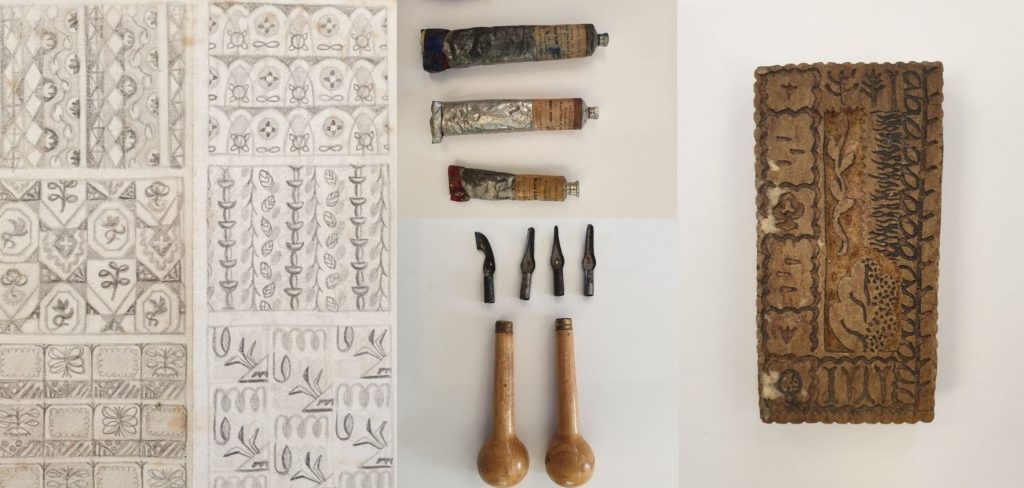
The collection contains some of the materials they used and the things they made, including scarves, dresses, and blouses. In some cases, the blocks used in printing can be matched to the finished articles.
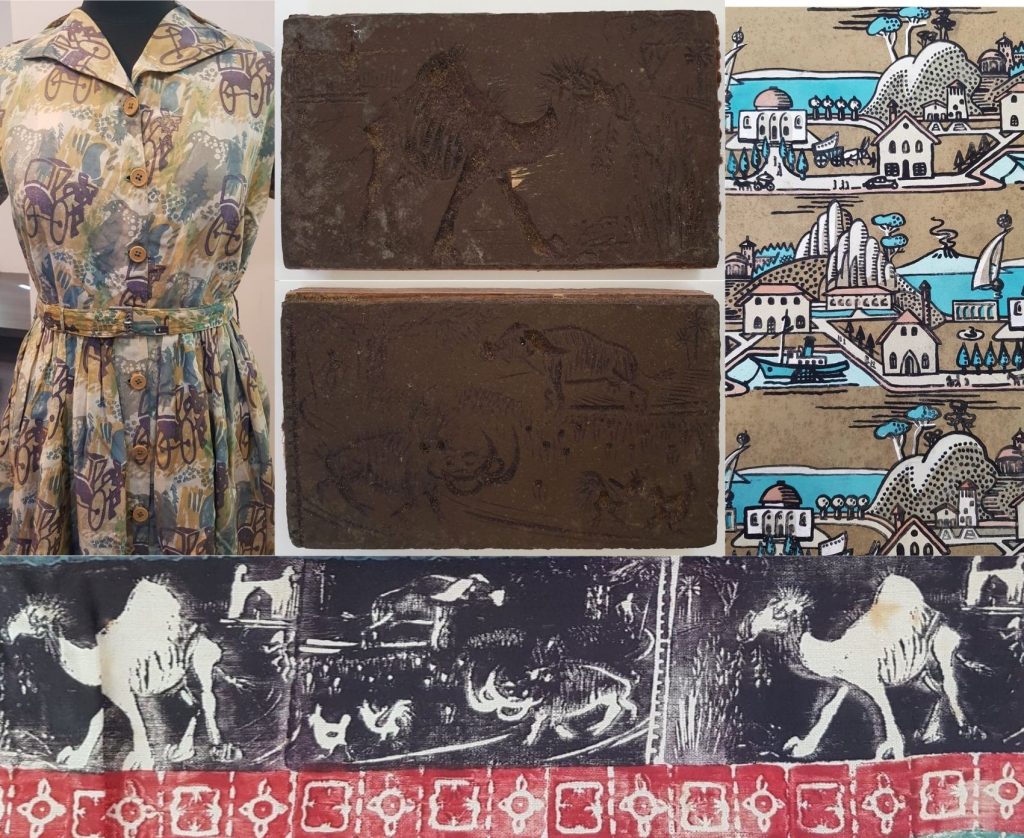
After their studies, Catriona and Mairead went on to spend periods of their lives in South Africa (1948-1958) and Malta (1966-1987). Through living abroad, the sisters saw the steady decline of the British Empire first hand: India became independent in 1947, South Africa in 1961, and Malta in 1974. The influence of this can be seen throughout their work, from cartoons exploring political issues of the time to the designs used in the clothing they made.
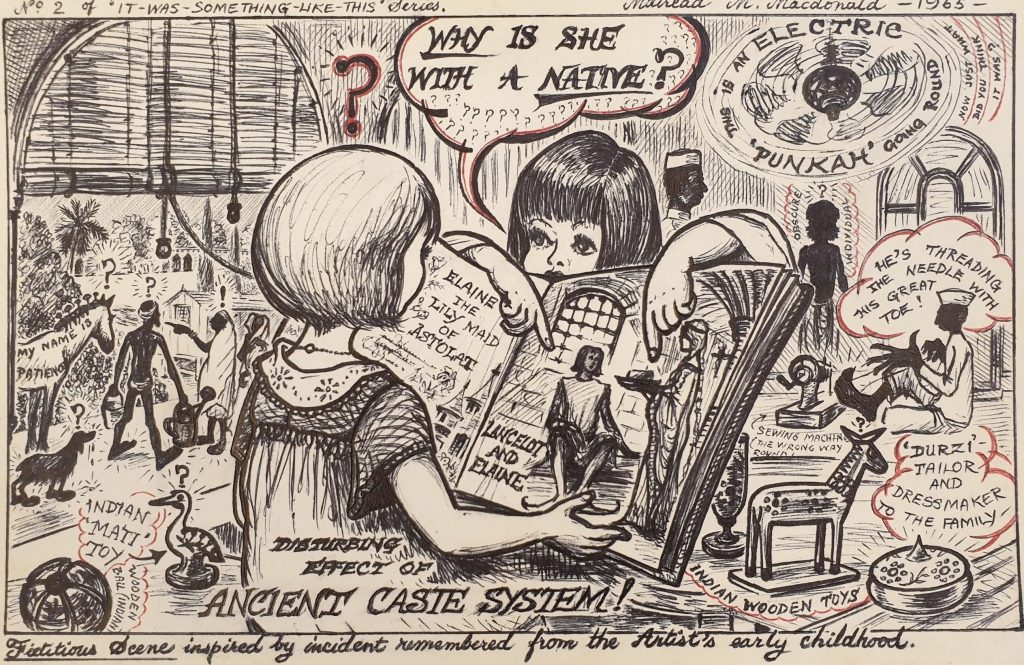
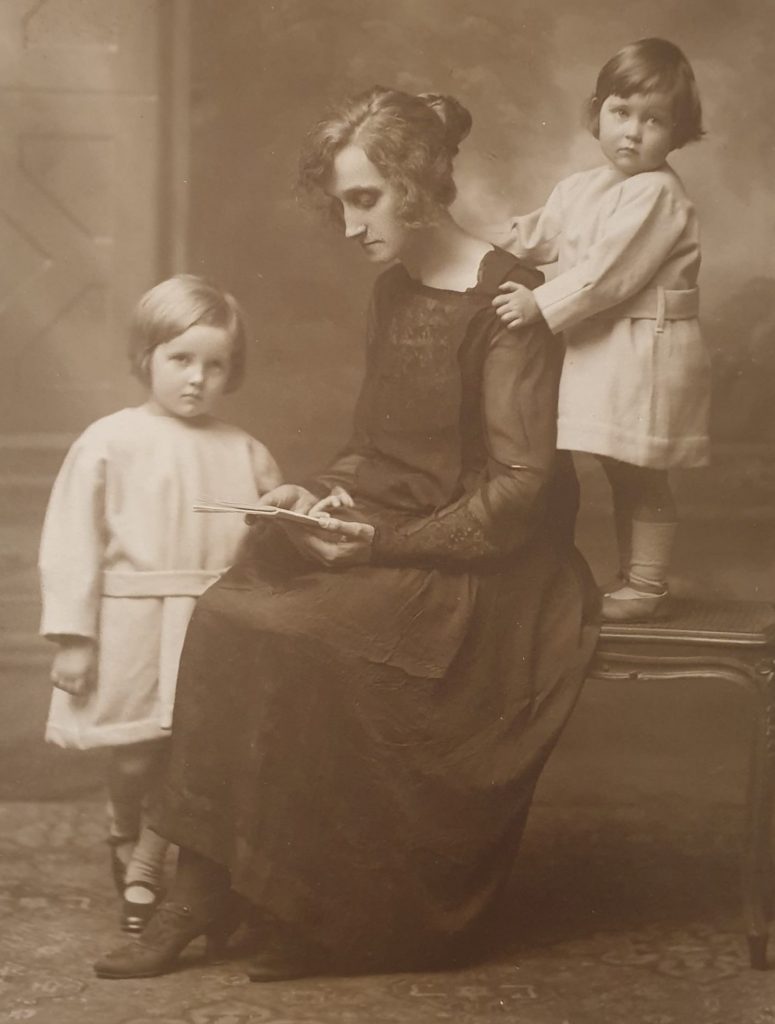
Despite their international childhoods, the sisters had strong links to the Highlands and Islands, and particularly the Isle of Skye, throughout their lives. Their parents taught them Gaelic and they visited often, keeping in close contact with relatives in Uig throughout their lives.
The archive holds the sisters copy of Dwelly’s Illustrated Gaelic-English dictionary 4th edition. The sisters’ names are inscribed on the book with the year 1941.
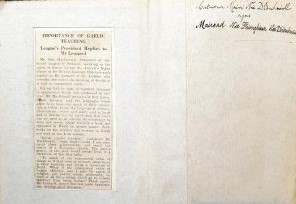
The Macdonald sisters’ dictionary.
Their work was heavily influenced by their connections with the Highlands and Islands. For example, Mairead’s “Dream Series” commented on contemporary changes and events in the Highlands and Islands of Scotland. “Dream Series No. 5: Gigglesthwaite Tours” shows a bus tour which is being held up by two Highland cows, with Duntulm Castle, Skye, in the background. The cows, Sòbhrag (Primrose) and Neòinean (Daisy), ask the tourists: “Cò as a h-eirigh sibh?” (“Who did you arise from?”) and “Cò leig a mach sibh?” (“Who let you out?”)
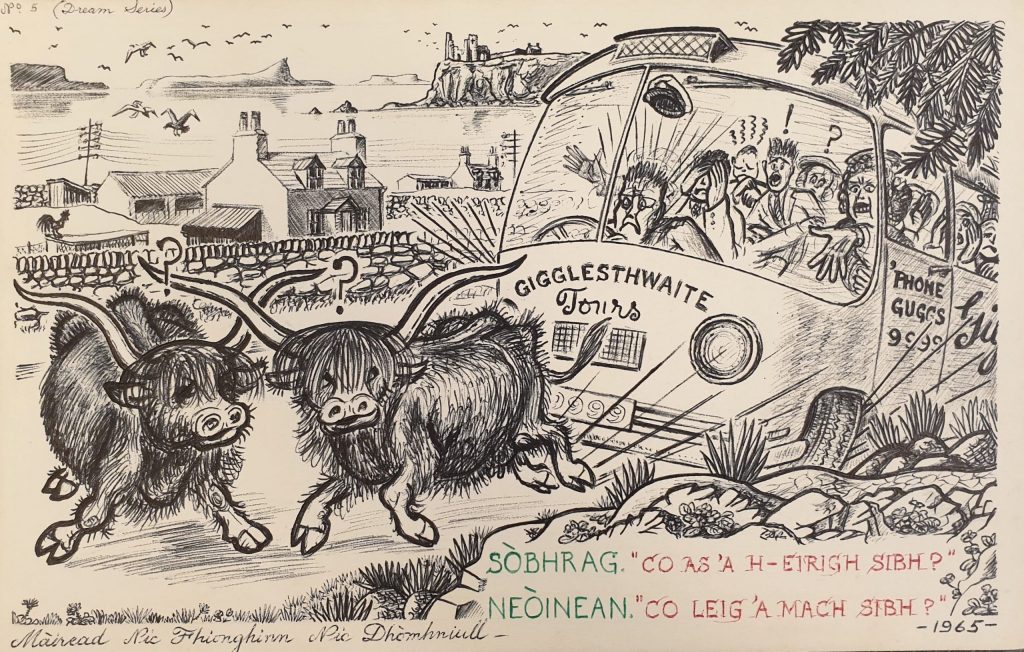
Mairead’s “Eala Fo Leòn” (“The Injured Swan”) or “The Sacred Wild Swan” is an illustration of a Hebridean legend, with narrations in both English and Gaelic. The reverse side shows Mairead’s commentary on the illustration, showing the sense of humour which is to be found throughout her work.
Mairead was critical of her own work at times as this note demostrates. It reads:
“Very inaccurate representation of a swan – especially as it was meant to represent a wild swan!”
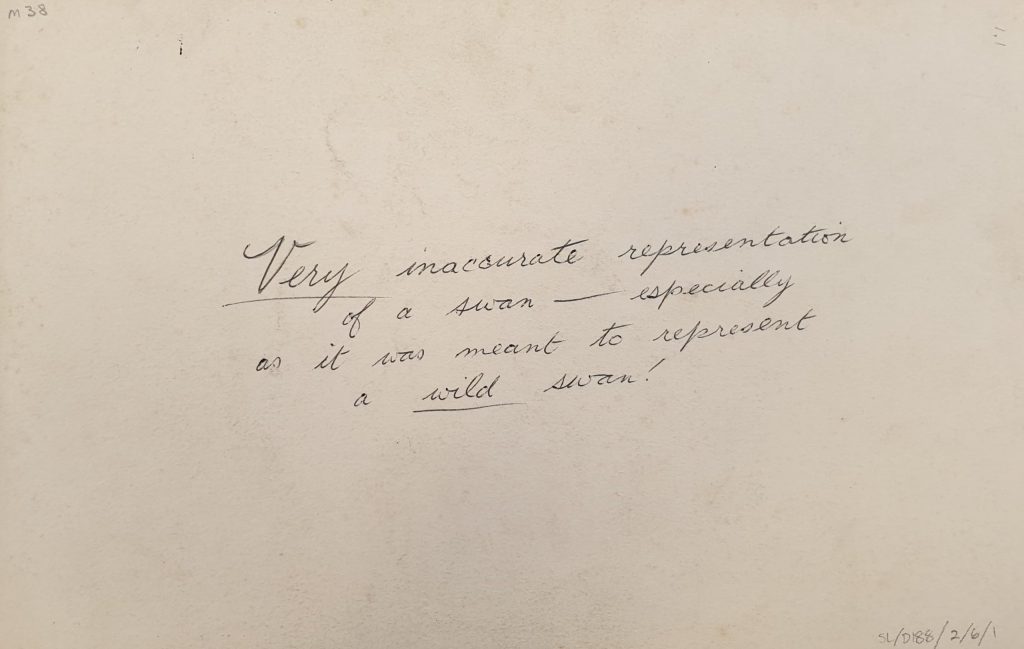
Ref: [SL/D188/2/6/1].
![SL.D188.2.6.1-smaller “Eala Fo Leòn” (“The Injured Swan”) or “The Sacred Wild Swan”, Mairead Mackinnon Macdonald [SL/D188/2/6/1].](https://www.highlifehighland.com/skye-and-lochalsh-archive-centre/wp-content/uploads/sites/123/elementor/thumbs/SL.D188.2.6.1-smaller-ppa39192r0u9hkpopxh3jenr1ps1px6qa21mmiei2o.jpg)
The sisters continued to travel throughout their lives, collecting menus and leaflets, as well as coins dating back as early as 1799. Finally, they settled in Sark, where they kept tortoises and were often visited by relatives and friends. There, Mairead died in 1990. Catriona stayed in Sark until the last year of her life, when she relocated to Uig in the north of Skye.
![SL.D188.1.3.14.9-354×550 Catriona (2nd left) and Mairead (3rd left) on a visit to India, 1978 [SL/D188/1/3/14/9].](https://www.highlifehighland.com/skye-and-lochalsh-archive-centre/wp-content/uploads/sites/123/elementor/thumbs/SL.D188.1.3.14.9-354x550-1-ppa430bqrz5pgmfpxfza76uktcv97473tcuxtifs3g.jpg)
